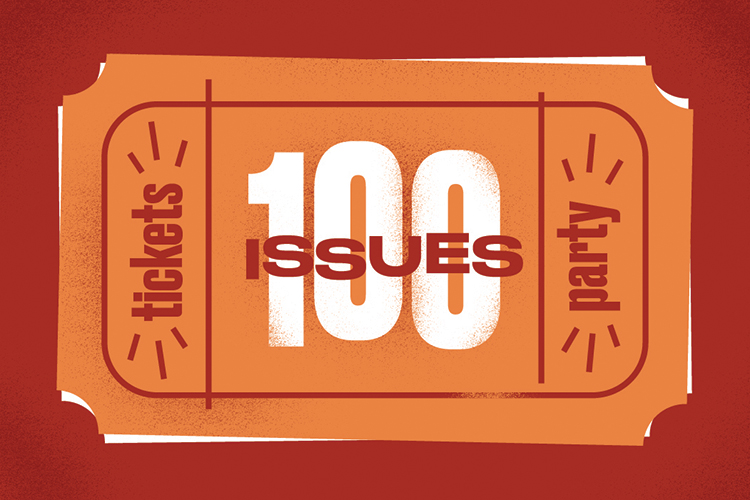 Story by Brendan Skwire | Photo by Lucas Hardison
Story by Brendan Skwire | Photo by Lucas Hardison
When you think of hops, you think of beer. After all, the viney, aromatic plant is what makes beer taste like beer: Without the distinctive bitterness, your favorite brew would taste like alcoholic pancake syrup.
But if you think about where they come from, you probably don’t think of Philadelphia.
Hops are cultivated commercially in many areas of the world, and the majority grown domestically come from the Pacific Northwest. They come in more varieties than space here permits. If you have a taste for craft beers, you may recognize Cascade hops, which give Sierra Nevada Pale Ale its distinctive floral aroma, and Simcoe hops, which lend a citrusy tang to Yards Philadelphia Pale Ale.
Even though places like Oregon and Washington account for most domestic hops production, sustainability-minded Philadelphia-area breweries and small farms have begun experimenting with growing this hardy perennial locally. Philadelphia Brewing Co. has been growing varieties such as Cascade and Northern Brewer in its courtyard for the past couple of years, and offers the seasonal Harvest From the Hood, which also includes hops grown by their neighbors at Greensgrow Farm.
But you don’t have to be a brewer—or even a beer drinker—to grow your own hops. I’ve been growing them for the past five years, and I recommend them to anyone looking for an easy-to-sustain green canopy in the backyard. Hops can reach heights of up to 40 feet (so you’ll probably want to have at least two stories for this vigorous vine), and they come back year after year. When trained properly, they make a dense and aromatic privacy screen for your backyard. And honeybees seem to love ’em—always a plus.
Hops don’t grow from seed or a bulb, but from a thick, woody rhizome (essentially a horizontal, underground stem) you plant in late March or early April. I’m sure there are other suppliers in the city, but I got mine (Cascade and Nugget) from George Hummel and Nancy Rigberg, owners of Home Sweet Homebrew (2008 Sansom St., 215-569-9469, homesweethomebrew.com). “Hops are easy to grow if you give them lots of sun and water, something to climb on, and a soil medium that encourages spread and growth,” says Rigberg. “It doesn’t hurt to sit below them and enjoy a beer, either. A strategically placed hammock can be [an ideal] vantage point for watching them grow, sometimes a foot a day in season.”
The rhizome is covered with tiny buds: Plant it vertically, with the buds pointing up, about two inches deep. Hops love compost and direct sunlight, so plant in a south-facing yard, mulch heavily with black gold, and water copiously. Soon after planting, you’ll find literally dozens of shoots erupting. Trim back all but the three strongest shoots from each rhizome, or be prepared for a mess.
I have a two-story twin in Southwest Philly, and to train my hops I hammered three large nails per plant into my windowsill, tied strong rope around each, and draped the rope over trellises attached to my deck rail. Hops grow incredibly fast, and even though Rigberg jokes about it, you really can expect rates of up to a foot a day. Although the flowers can be a little sparse the first year, the plant fills out quickly, with wide fan leaves that form a wall up your deck and a roof over your head.
By midsummer, the flowering cones begin to appear everywhere. Depending on which variety you’ve planted, they may look like tiny green pineapples or pinecones. Nuggets can look like miniature artichokes; the largest is about half the size of a pingpong ball. On the other end of the spectrum, Cascades grow to an enormous size: 2 to 3 inches long, looking disturbingly like giant green bugs. If you tear the flowers open, bright yellow resin sticks to your fingers—the smell is glorious. Begin harvesting hops in earnest when the tips of the flowers start to turn brown; a food dehydrator set on low is the ideal drying agent.
Once you’ve harvested as many hops as you can, cut the vines back to about 2 inches above the soil and allow the rhizome to rest through the winter. Once spring returns, it’ll be back, and each year will yield more hops than the year before.
brendan skwire is an avid gardener, homebrewer, bass-fiddle player and rabble rouser. Read more of his work at brendancalling.com.




